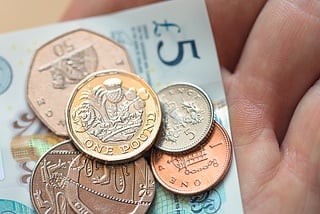GBP/USD hangs near multi-week low, below 1.3100 as traders await FOMC minutes
|
- GBP/USD attracts fresh sellers on Wednesday and is pressured by a combination of factors.
- The GBP continues to be weighed down by BoE Governor Bailey’s dovish remarks last week.
- Reduced bets for a jumbo Fed rate cut underpin the USD and contribute to the pair’s slide.
The GBP/USD pair struggles to capitalize on the previous day's modest recovery gains and meets with a fresh supply during the Asian session on Wednesday. Spot prices currently trade around the 1.3085-1.3080 area and remain within the striking distance of a nearly four-week low touched on Monday.
The British Pound (GBP) continues with its relative underperformance in the wake of market conviction that the Bank of England (BoE) might be heading towards speeding up its rate-cutting cycle. The bets were lifted by BoE Governor Andrew Bailey's dovish remarks last week, saying that there was a chance that the central bank could become a bit more aggressive in cutting rates if there's further good news on inflation. This, in turn, is seen as a key factor exerting downward pressure on the GBP/USD pair.
The US Dollar (USD), on the other hand, stands tall near a seven-week high touched last week amid diminishing odds for a more aggressive policy easing by the Federal Reserve (Fed). In fact, the markets are currently pricing in over an 85% chance that the Fed will lower borrowing costs by 25 basis points (bps) in November. Moreover, escalating geopolitical tensions in the Middle East and the disappointment over China's stimulus update underpins the buck, contributing to the offered tone surrounding the GBP/USD pair.
The aforementioned fundamental backdrop suggests that the path of least resistance for spot prices is to the downside. Bearish traders, however, might refrain from placing aggressive bets and prefer to wait for the release of the FOMC meeting minutes later during the US session. Apart from this, the US Consumer Price Index (CPI) and the Producer Price Index (PPI) on Thursday and Friday, respectively, will influence the USD price dynamics and help in determining the next leg of a directional move for the GBP/USD pair.
BoE FAQs
The Bank of England (BoE) decides monetary policy for the United Kingdom. Its primary goal is to achieve ‘price stability’, or a steady inflation rate of 2%. Its tool for achieving this is via the adjustment of base lending rates. The BoE sets the rate at which it lends to commercial banks and banks lend to each other, determining the level of interest rates in the economy overall. This also impacts the value of the Pound Sterling (GBP).
When inflation is above the Bank of England’s target it responds by raising interest rates, making it more expensive for people and businesses to access credit. This is positive for the Pound Sterling because higher interest rates make the UK a more attractive place for global investors to park their money. When inflation falls below target, it is a sign economic growth is slowing, and the BoE will consider lowering interest rates to cheapen credit in the hope businesses will borrow to invest in growth-generating projects – a negative for the Pound Sterling.
In extreme situations, the Bank of England can enact a policy called Quantitative Easing (QE). QE is the process by which the BoE substantially increases the flow of credit in a stuck financial system. QE is a last resort policy when lowering interest rates will not achieve the necessary result. The process of QE involves the BoE printing money to buy assets – usually government or AAA-rated corporate bonds – from banks and other financial institutions. QE usually results in a weaker Pound Sterling.
Quantitative tightening (QT) is the reverse of QE, enacted when the economy is strengthening and inflation starts rising. Whilst in QE the Bank of England (BoE) purchases government and corporate bonds from financial institutions to encourage them to lend; in QT, the BoE stops buying more bonds, and stops reinvesting the principal maturing on the bonds it already holds. It is usually positive for the Pound Sterling.
Information on these pages contains forward-looking statements that involve risks and uncertainties. Markets and instruments profiled on this page are for informational purposes only and should not in any way come across as a recommendation to buy or sell in these assets. You should do your own thorough research before making any investment decisions. FXStreet does not in any way guarantee that this information is free from mistakes, errors, or material misstatements. It also does not guarantee that this information is of a timely nature. Investing in Open Markets involves a great deal of risk, including the loss of all or a portion of your investment, as well as emotional distress. All risks, losses and costs associated with investing, including total loss of principal, are your responsibility. The views and opinions expressed in this article are those of the authors and do not necessarily reflect the official policy or position of FXStreet nor its advertisers.